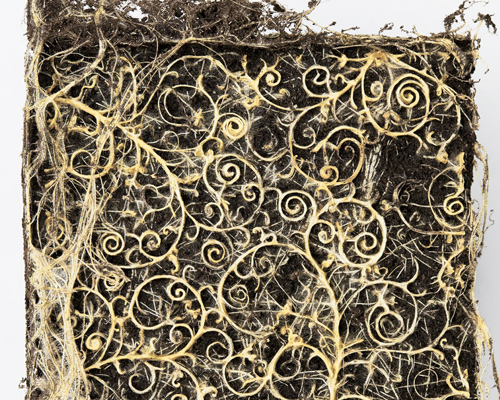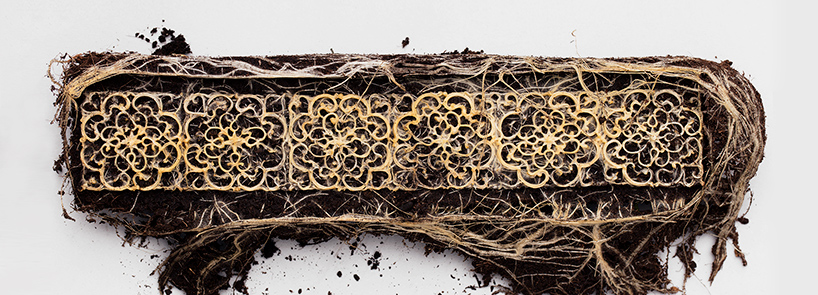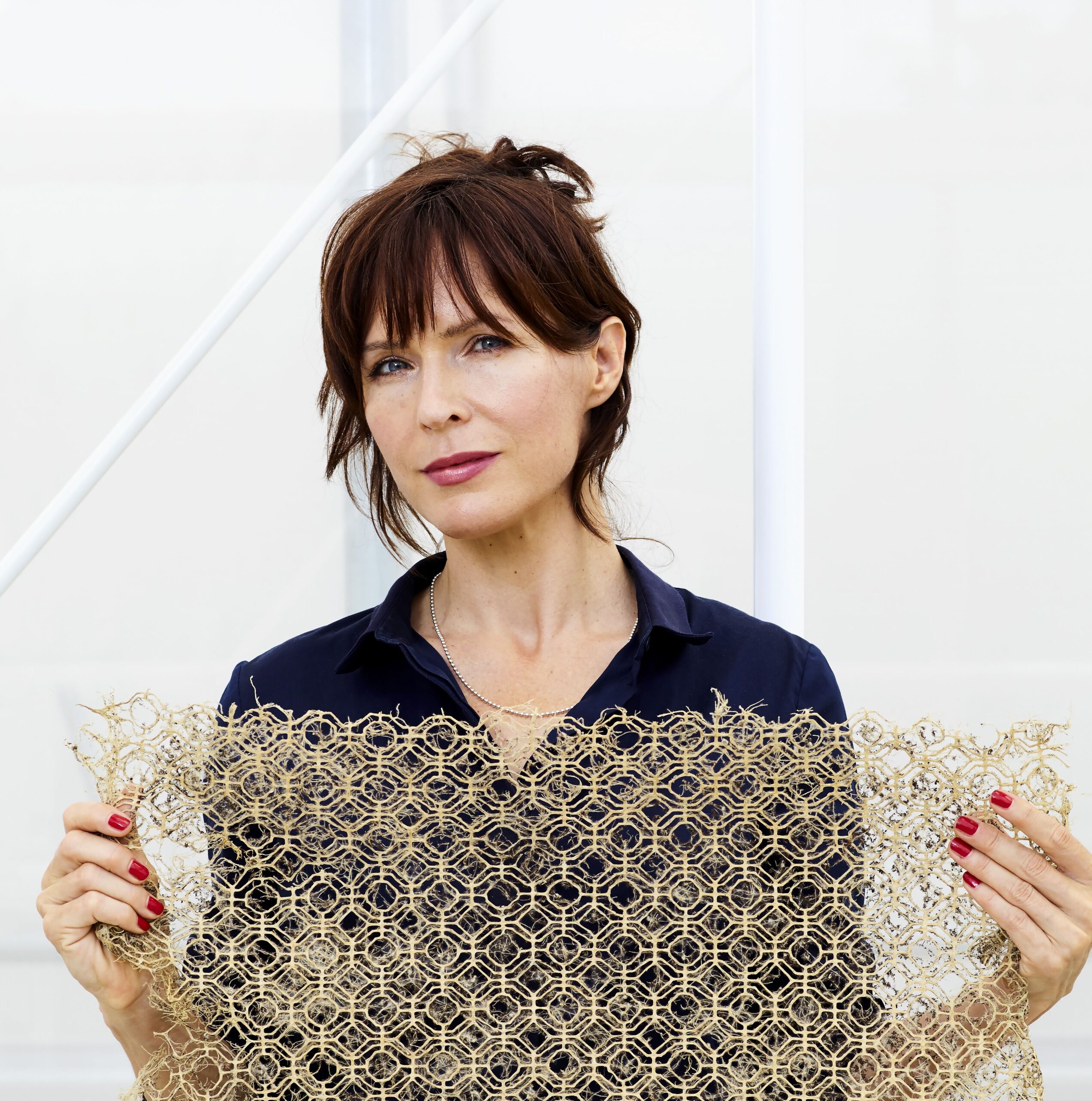I was curious if anyone had directed plant roots to form a fabric or panel. Something where the roots would grow in a form to form a flat or 3D fabric like construct. The roots can weave themselves and potentially root graft to give significant strength, maybe. Depending on the species used you can imagine lovely colors too. Golden, red, white, green? Cloth, wall paper, rugs, seamless clothing, architecture panels, doors, curtains....I don't know....what can you make?
Anyhow, a quick search got me to finding
Diana Scherer's work. Tell me what we should create. What species or species blends could we use to create lovely fine or coarse weaves and amazing colors? Can you do this with woody species and end up with the roots gaining the strength of woven wood?
Does this make you want to play? Enjoy.















